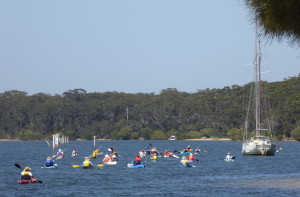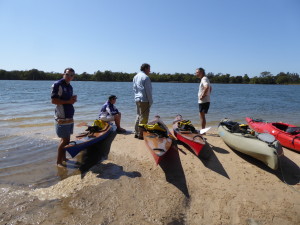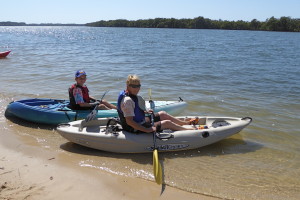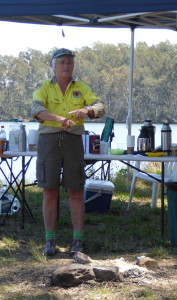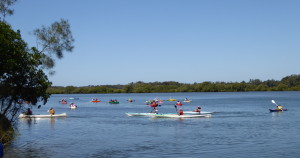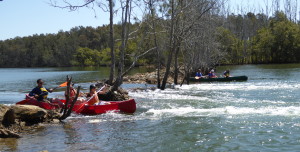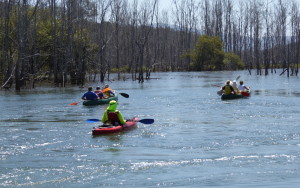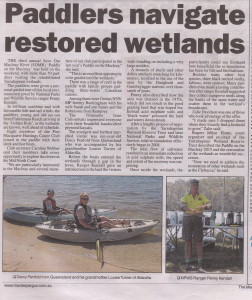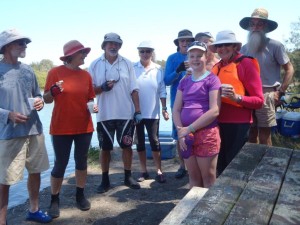Clarks Gully Mine Submission Information
Save Our Macleay River [SOMR] committee members have put together some information to help you make a submission regarding the proposed Clark Gully Mine. You can say in your submission that you object to the proposed development or that you are making your submission regarding concerns that you have about the development. If you do object to the development then it is worth noting that in your submission.
If you are a downstream resident or rely on the downstream catchment for potable water you can state this in your submission. SOMR encourages concerned people from other areas to also make a submission.
Click here to view the Clarks Gully Mine EIS [Environmental Impact Statement] or go to http://www.armidale.nsw.gov.au/clarks-gully-underground-mine
Submissions need to be addressed to:
Armidale Dumaresq Shire Council
Planning and Environmental Services
PO Box 75A,
ARMIDALE NSW 2350
Attention: John Goodall
Re:
DA/File No: DA -174-2015
Property Description: 140 STOCKTON ROAD, HILLGROVE, being Lot 7300 DP 1139642, Lot 1 DP976685, Lots 1-2 DP 911856, Lot 1 DP 911615, Lot 9 DP 979339 and Lots 119, 120, 144 and 409 DP 755834
Proposal: ESTABLISHMENT OF AN UNDERGROUND MINE
Consent Authority: ARMIDALE DUMARESQ COUNCIL.
Submissions must be made by Friday 13th November.
Some points you may like to include:
- No consideration of downstream users: Naturally occurring minerals, in particular arsenic, are leaching into the Macleay River and the tributaries. Any further disturbance by human activities has the potential to further pollute and contaminate the water. The new mine in close proximity to Bakers Creek is of particular concern. The community and neighbouring council downstream have not been consulted. The ‘operations of the mine’ and the sediment and settling ponds are shown to be quite close to the already highly arsenic laden Clarks Gully ephemeral creek. There is a proposed ‘settling dam’ with adjacent sediment drying area, and ‘collection dam’ proposed under the water and sediment control measures, with various pipe and pump links. The diagram and/or descriptions do not clarify that the polluted ‘mine’ and ‘settling dam’ water will not be discharged into and cannot possibly reach Bakers Creek. Any escaped contaminants have the potential to impact on all those who rely on the Macleay supply for potable water. In the event of a spill what extra precautions are being taken to prevent or limit damage? Furthermore, “specific locations of the sedimentation and mine water storage dams have not been finalised” (EIS p 49 and Appendix C 4-42) It is also stated that “The proposed approach to water management at the Clarks Gully Mine is preliminary only and subject to change” (Appendix C, p 46). Therefore, it is almost impossible to determine the impact of the Clarks Gully Mine on Bakers Creek. The specific locations of the on-site dams should be an integral part of the EIS.
- Mine capacity and tailing dams: According to the Annual Environmental Management Report 2014, the existing Hillgrove Mine extracted 111,088 tonnes in 2014 with a forecast for of 216,558 for 2015. A lifespan of 10 -15 years has been predicted by mine representatives. It is proposed that the Clarks Gully underground mine will extract 240,000 tonnes of ore per annum over a life span of 3-4 years. (EIS, p xv). A development period of close to 3 years will be followed by a production phase of approximately 4.1 years. The ore yield from Clarks Gully would more than double the current processing at the Hillgrove site. It has to be noted that the Water Resources Impact Assessment (Appendix C, p 74), uses a much shorter time frame for the development of the Clarks Gully Mine (14 months) and a lower production volume (175,000 t pa) as the basis of their assessment. The advice should be questioned because it is based on a lower production capacity than the proposal.
- Tailings Storage Facility 3 [TSF3]: Given that production and processing of ore at the Hillgrove mill site will be doubled, the environmental impacts of the whole Hillgrove Mine must be considered, particularly the capacity of the Tailings Dams must be scrutinised. A new tailings dam, TSF3, is mentioned in the plan, but the time frame and design is not part of this EIS, “but will be part of a separate DA”. (EIS p 17). The construction of TSF3 must be an integral part of the current planning and approval process.
- Enhancing the health of the headwaters of the Macleay River catchment: This requirement is stated in the official Office of Environment & Heritage document [see Appendix A], but not included in the EIS nor addressed by the assessment on water. How will the proposed Clarks Gully underground mine and the increased operations at the Hillgrove Mine site enhance the health of the headwaters of the Macleay River catchment?
- Decommissioning & Rehabilitation: Currently there is no plan for decommissioning & rehabilitating the mine. The EIS indicates that the plan will be developed 12 months after operations commence. Regulation of mining by NSW Resources and Energy specify that: “Titleholders must also submit and comply with an approved Mine Operations Plan (including a rehabilitation plan), which is used for detailed rehabilitation planning and for monitoring rehabilitation progress and success. They are also required to submit security bonds for exploration, petroleum and mining titles, which cover the full cost of rehabilitation in the event of default by the titleholder (http://www.resourcesandenergy.nsw.gov.au/landholders-and-community/minerals-and-coal/mining).” A detailed rehabilitation plan should be part of the EIS.
- Environmental bond: “A detailed Mine Closure and Rehabilitation plan for the proposed Clarks Gully mine will be completed within 12 months from granting of consent.” (EIS, P 130). Many mines across Australia have been abandoned by their operators. The toxic legacy is left behind for the community and taxpayers to clean up. Will the bond be reassessed/increased in line with increased activity leading to increased risk at the mine, transport and processing sites?
- Transport & Disaster Management Concerns: There are concerns regarding the potential for contamination incidents occurring with the increased traffic on the haul road, which is along the escarpment. What safety plans are in place for such incidents? Will the haul trucks be covered?
- Stormwater Modelling: Advice in Appendix C includes extensive modelling of stormwater impact on Clarks Gully and Bakers Creek in the vicinity of the Clarks Gully Underground Mine. There is no consideration given to stormwater impact on the water management structures at the site. The stormwater management plan, specifically relating to sedimentation and mine water storage, has not been finalised yet. It is probable that the sedimentation dam, the sediment drying area and the stormwater catchment dam will contain water contaminants such as arsenic and lead. Heavy rainfall impact on the water management structures at the Clarks Gully mine site must be investigated and take excessive stormwater into account.

